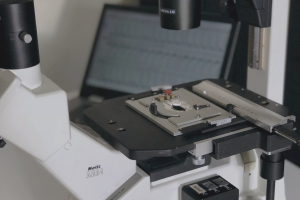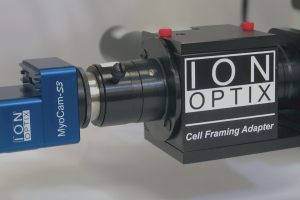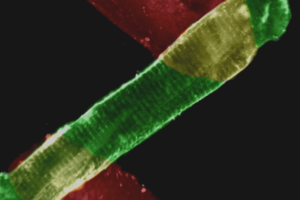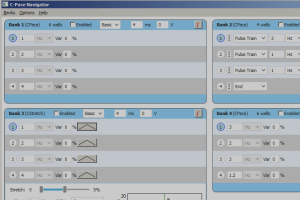Kuramochi Y1, Lim CC, Guo X, Colucci WS, Liao R, Sawyer DB
Abstract:
The purpose of this study is to test the hypothesis that mechanical and electrical activity in adult rat ventricular myocytes (ARVM) alters responses to proapoptotic and prosurvival ligands. The effects of electrical stimulation on myocyte survival, stress signaling, response to beta-adrenergic receptor (beta-AR)-stimulated apoptosis, and neuregulin-1beta (NRG) were examined. Electrical stimulation (6.6 V/cm; 0, 2, and 5 Hz; 2-ms duration; alternating polarity) of ARVM resulted in more than 70% capture. Although ARVM paced for 48 h showed higher mitochondrial uptake of 3-(4,5-dimethylthiazol-2-yl)-2,5-diphenyltetrazolium bromide (P < 0.05, 0 vs. 2 and 5 Hz), electrical stimulation had little effect on cell survival assessed by trypan blue uptake, CPK release, and terminal deoxynucleotidyl transferase-mediated dUTP nick-end labeling staining. Electrical stimulation for 24 h did not induce stress response (heat shock protein 70, 90) nor stress kinase (Erk, JNK, p38) activation. NRG stimulation of Erk and Akt was similar between paced and quiescent cells. Pacing sensitized myocytes to beta-AR-stimulated JNK phosphorylation and cell death with 0.1 microM norepinephrine (NE) in paced myocytes causing equivalent cytotoxicity to 10 microM NE in quiescent cells. NRG suppressed beta-AR-induced apoptosis through a phosphatidylinositol-3-kinase-dependent pathway in both paced and quiescent cells, although it is overwhelmed by high-NE concentration in paced cells. Thus myocyte contractility modulates both NE cytotoxicity as well as the cytoprotective effect of NRG. These results demonstrate the feasibility and importance of using electrically paced cardiomyocytes in primary culture when examining the signaling pathways of cell survival.






